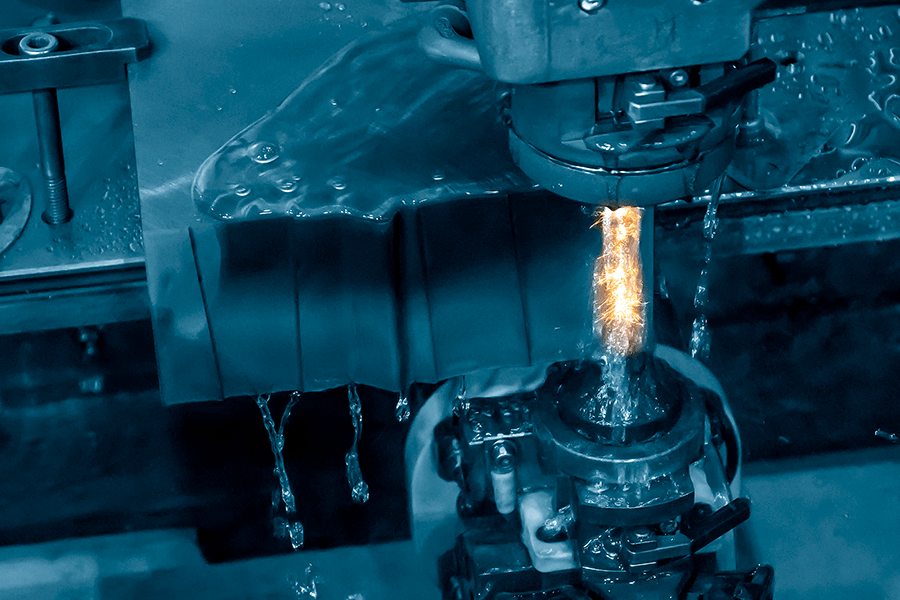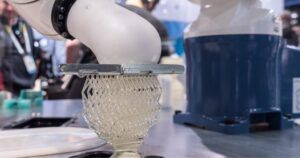Wire cutting is another machining method, but unlike conventional machining where cutting tools like milling machines, lathes, and drills are used, this process employs a copper or brass wire to cut the contour of a conductive material piece.
This technique offers intriguing advantages at an industrial level, which we will undoubtedly explain in this article.
How does wire cutting work?
This is one of the most widely used techniques in mold manufacturing due to its precision and its ability to work with extremely hard materials. It’s a flexible process that allows for the cutting of highly complex shapes that cannot be machined using other methods or may require a significant amount of time, resulting in higher costs.
Not only can molds or tools be machined, but it’s also possible to fabricate gauges, stamping instruments, punches, dies, disk cams, and electrodes using this method.
Physical basis of wire electrical discharge manining
Wire cutting, also known as wire electrical discharge machining, is based on the physical principle of creating an electrical arc between the electrode and the workpiece. To generate this arc, both the workpiece and the electrode must be placed in an appropriate environment, namely, they should be immersed in a dielectric medium. The purpose of doing this is to remove particles from the material’s surface until achieving the same shapes as the electrode.
Electrical Discharge Machining (EDM) is equipped with a metallic wire responsible for cutting the pieces based on the previously specified design. This wire collaborates with electrical discharges, which generate sparks between the workpiece and the wire, effectively removing excess material. Simultaneously, complete removal of material from the workpiece’s surface is achieved through a continuous drip of a dielectric substance.
The final result depends on various factors such as the applied current and voltage, wire tension, material thickness, and working speed. In fact, the working speed is one of the most crucial factors; the slower the wire feed rate, the higher the quality of the final surface will be.
This technique is derived from the die-sinking electrical discharge machining. However, in the 1970s, there arose a need to replace the electrodes used for piece extraction with a conductive wire for direct material removal, allowing for the creation of various shapes without taper. This change aimed to save on the production of custom-shaped electrodes and resulted in the final product being obtained through a more versatile process.
Tolerances in wire cutting
The tolerances achieved with this method can be as tight as ± 0.02 mm for pieces with a thickness of up to 50 mm (small parts) and a roughness of up to 20 VDI.
Advantages of wire electrical discharge machining (EDM)
This is one of the machining methods that offers significant advantages. First and foremost, its high efficiency stands out, allowing it to work with any cutting depth. It’s a technique that doesn’t demand excessive effort, and depending on the wire EDM machine, it may not even require manual operation.
Another advantage is that these machines can be used to machine parts, regardless of their geometric complexity. They provide precision and delicate cuts. In addition, it’s a versatile technique that can be applied to other machining methods and all types of parts.
Moreover, electrical discharge machining can be applied to tight and narrow surfaces, as the wire can reach challenging areas. This process is completed in a single step, making it one of the cost-effective long-term options. There’s no need for post-cut treatments like turning or milling to achieve a smooth finish.
The machines are easy to use, and as mentioned earlier, depending on the model, they may not require operator intervention. This reduces production costs by minimizing labor, manufacturing time, and consequently, delivery lead times.
Experts in industrial wire cutting technique
Regarding the wire, it’s universal, allowing for any piece configuration. What’s crucial before performing the cut is to undergo heat treatments that help prevent deformation in the workpiece.”
As you can see, this type of machining offers multiple benefits. That’s why at Idelt, we offer this technique as part of our services. You can bring your projects to life in the shortest time possible.







